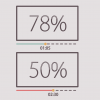For creative companies, the most powerful marketing tool is the portfolio. Nothing speaks for your work as well as your work itself. That said, it can sometimes be hard to assemble a meaningful online portfolio to prove to potential clients that you’re the solution to their creative needs. Furthermore, crafting an online portfolio is even more challenging, since you don’t have the opportunity to tailor it to each individual potential client. With these challenges in mind, we’ve developed a list of key elements to include so that you can leverage your online portfolio to the fullest.
Feature Your Best Project
Let’s begin simply. The work that your company is most proud of is more than likely to be the work that will speak to potential clients the best. This all sounds elementary, but consider the case in which your best work existed outside of the realm of your typical offerings. In this case, you may think it wise to avoid publicizing this work that doesn’t represent the services you offer. Avoid this temptation. Your online portfolio will only benefit from featuring your most outstanding project.
Ensure All Items are Relevant
Your online portfolio will be useless if it only features services that you no longer provide. If your company used to focus on high-budget TV commercials, but now tends to focus on feature-length documentaries, then work samples from your days in television aren’t truly relevant. Featuring services on your online portfolio that you no longer provide will confuse potential clients. Moreover, inquiries into services that your firm either cannot or will not provide any longer will result in a poor public image and can cause your sales team to get bogged down in calls that won’t result in new clients. As tempting as it may be to try to show your company’s broad range of experience, it is important that your online portfolio only feature services that you still provide.
Feature All of Your Different Offerings
In contrast to the above point, if you do offer a service, you should feature it. If you do have diverse high-quality offerings, then it will only help your online portfolio to show potential clients everything that you have to offer. It is certainly one thing to say that you offer “video, photography, and web design services,” but if you don’t feature examples of each in your online portfolio, potential new clients will not be inclined to believe you. As such, this point serves as a mirror to the previous tip: just as you should not feature any services that you don’t offer, you should feature any services that you do offer.
Frame Your Online Portfolio
In the case of a physical photography portfolio, you might take extra time to ensure that your photos are on high-quality photo paper, are evenly spaced and easy to see, and bound together in a high-quality book. You should take considerable care when building your online portfolio. Though the background of the web page is not what is going to make the deal in the eyes of a potential client, it could very easily break it. This being said, it’s important that you take the time to pick a web page layout that organizes your work effectively.
One idea is to create a directory that sends you to pages that feature each of your main offerings (ie. video, photography, and web design). Ensure that the colors of the page don’t clash horribly with any in your featured content. In fact, it is probably best to stick to muted and plain colors if not simply white and black. This is because it is ultimately the items in your portfolio that you want potential clients to look at, not the portfolio itself.
Ensure All Content is Top Quality
The resolution of online multimedia content is of paramount importance to your online portfolio. Chances are, even if your video look sample is as engaging as a James Cameron film, it will impress nobody in 240p. If your audio is fuzzy, or the picture unclear, you can count on the fact that the content will not be leveraged effectively. Though there are not any general standards for what constitutes acceptable quality for an online portfolio, it is probably best to upload any and all content at the highest possible quality. It’s worth using the server space and taking the extra upload time to have a killer set of featured work.
Feature Your Most Recognizable Projects
Showcasing works that are broadly recognizable can lend extra legitimacy to your company and help convince potential clients of your professionalism and talent. Therefore, if your company has worked on any projects like major television commercials, or provided web design to a hugely popular website, it’s important to feature those works in your online portfolio. You can think of these projects as your “signature” works in your online portfolio.
Feature Your Most Challenging Project
If you’re a creative services firm, you are likely a group of talented creative thinkers. This manifests itself in how you approach your most challenging projects. It is important to feature this work, since your online portfolio is meant to be a testament to your talents and abilities. One or two examples of challenging projects that really made your team think outside the box will show to potential clients that your company is flexible and accommodate their specific needs.
The online portfolio often serves as the first point of contact between your company and potential clients. A strong first impression is critical! Following these key guidelines will help you showcase your creative work in effective ways to grow your business. Keeping your online portfolio professional and updated communicates competency to clients and builds brand credibility.
What are some other ways you keep your online portfolio polished? Share your tips with the community in the comments section below!






